HOW TO TAKE CARE OF YOUR PLANTS WHILE YOU'RE AWAY ON HOLIDAY
If you're planning to be away for a few weeks and have no-one to take care of your plants, you may worry that they won't survive the trip. Not to worry! With our help, you can ensure your green babies keep their natural glow while you work on your tan. Discover the best tips to keep plants healthy and happy while you're on vacation.
How to make sure your plants survive your VACATION
- Stop feeding your plants a week before departure. Food makes the plant more active and makes it grow faster, costing energy and therefore water.
- Before leaving, give your plants a thorough checkup. Remove any dry and dead leaves, check plants for any diseases or pests and dust the leaves if necessary. Check out these tips and basic advice for looking after houseplants, if you need it.
- Place your plants close together in a small space. This ensures higher humidity, which most houseplants like.
- Make sure that your plants get a little less sunlight than usual during your holiday, such as by placing a plant a little further away from the window or closing a nearby curtain. The more light plants get, the more water they need for photosynthesis. Make sure your plant isn't in the dark, however!
- If you won't be away for more than a week, give your plants one last watering before you go. This should last them while you're away. Note: it may be tempting to give your plants extra water, but don't water your plants more than usual! Too much can cause the roots to rot.
- If you are going away for more than a week and don't have a plant sitter, a watering system is one way to provide your plants with enough water. Check out give methods below to keep plants hydrated while you're out of town!
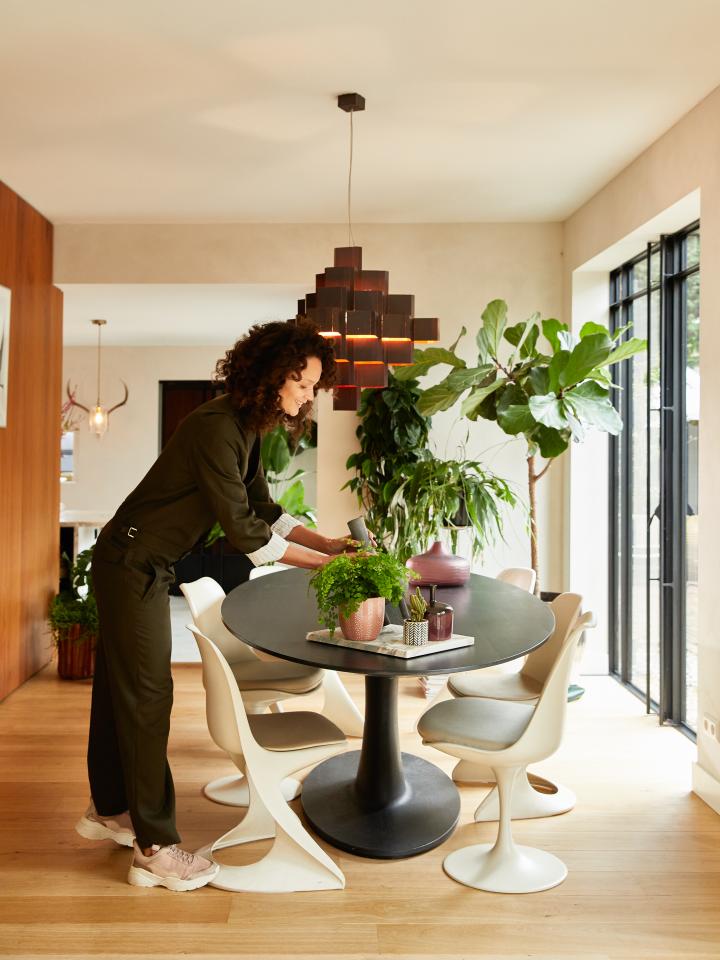
1. Watering plants with a ready-made water dropper
Many kinds of water droppers and water distribution systems are available that will water your plants in doses, preventing them from drying out and dying. The water dropper gradually drips into the potting soil.
You can also make one of these systems yourself (see below) or purchase one. It's important to water the plant before inserting the dropper, as this will make the system last longer and perform more effectively overall.
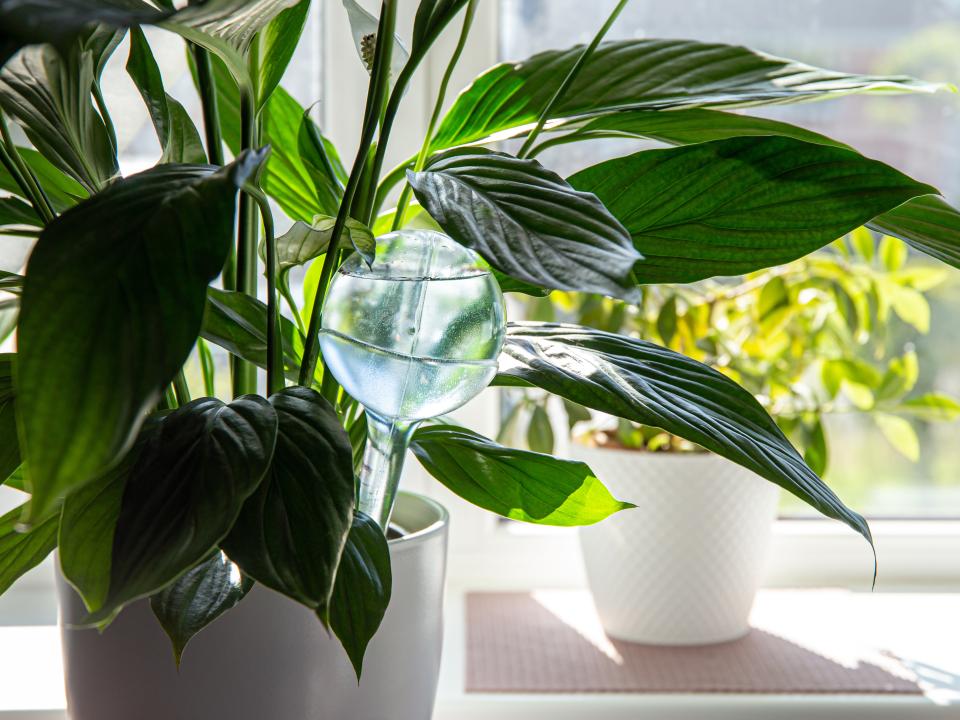
2. Watering plants with a bottle
It's possible to DIY a water distribution system with a water or wine bottle. The bigger the plant and the longer you are away, the bigger the bottle should be. For a large plant, you can use a wine bottle or litre bottle; for a small plant, a 500ml bottle will do.
How to make your own water dispenser for plants
If you're opting for a plastic bottle, make a hole in the cap of a clean bottle (with scissors, a knife or a hammer and nail), fill the bottle with water, water the plant so that the potting soil is well moistened, then poke the bottle upside down into the potting soil. To make sure it doesn't topple over, you may want to tie the bottle to a stick with some string.
If you're using a wine bottle, make a hole in the middle of the cap of a clean wine bottle (such as with a hammer and nail). Remove the nail from the hole and fill the bottle with water. Note: don't fill the bottle all the way to the top but only to the part where the neck starts to narrow, otherwise the water won't drain out later. Water the plant first, so that the potting soil is moist. Make a hole about 5cm deep in the soil and carefully turn the wine bottle upside down, placing it into the soil. The opening of the bottle should be firmly in the soil and no water bubbles should form inside the bottle.
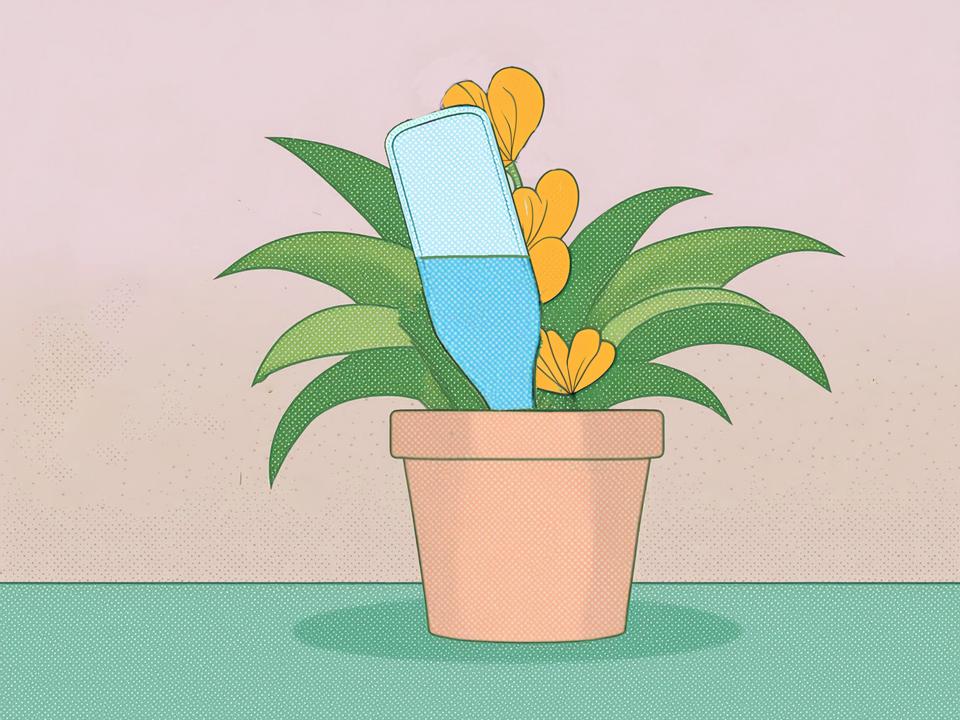
3. WATERING PLANTS WITH STRING
A slightly more complicated DIY method is watering plants with string. For this method, you will need a vase, pan or other water container, scissors, a paperclip (or anything else that sinks) and string, such as a cotton rope or long shoelaces.
How to make a watering system with string
Cut the string of the right length - it should be long enough to fit between the bottom of the water container and the plant's soil. Attach one end of the string to a paperclip and place it in the water container so that the string sinks to the bottom. Don't have a paperclip? Make sure the rope stays at the bottom in another way, such as by placing the end underneath another dish inside the water container.
Bury the other end of the string about 5cm deep into the potting soil, between or close to the roots of the plant. Make sure the string runs down from the water, otherwise the water won't get into the soil.
Tip: Looking to water large plants using string? You can use two or more strings that you place in different spots around the root ball. Don't have any string? The same principle works with kitchen roll. Roll up enough sheets firmly until it becomes a kind of rope, then place one end in the pot and the other in the water.
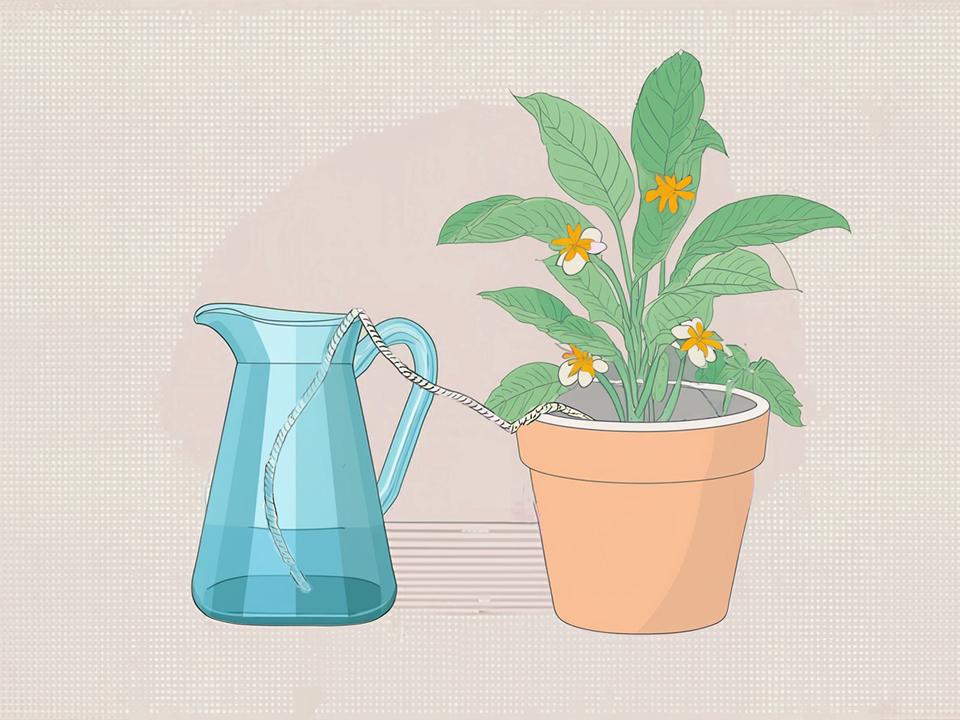
4. watering plants in the bath
If you have a bathtub, you can water your plants by placing them inside so they can absorb water from underneath. Place old towels into the bath and fill it up until there is a 1-2cm layer of water. Place potted plants (with drainage holes) onto the wet towels. The plants slowly absorb the moisture as long as the towels stay wet.
No bath? No problem! You can also give your plants a mini-bath by placing them onto a saucer with water, or try the same approach in your kitchen sink.
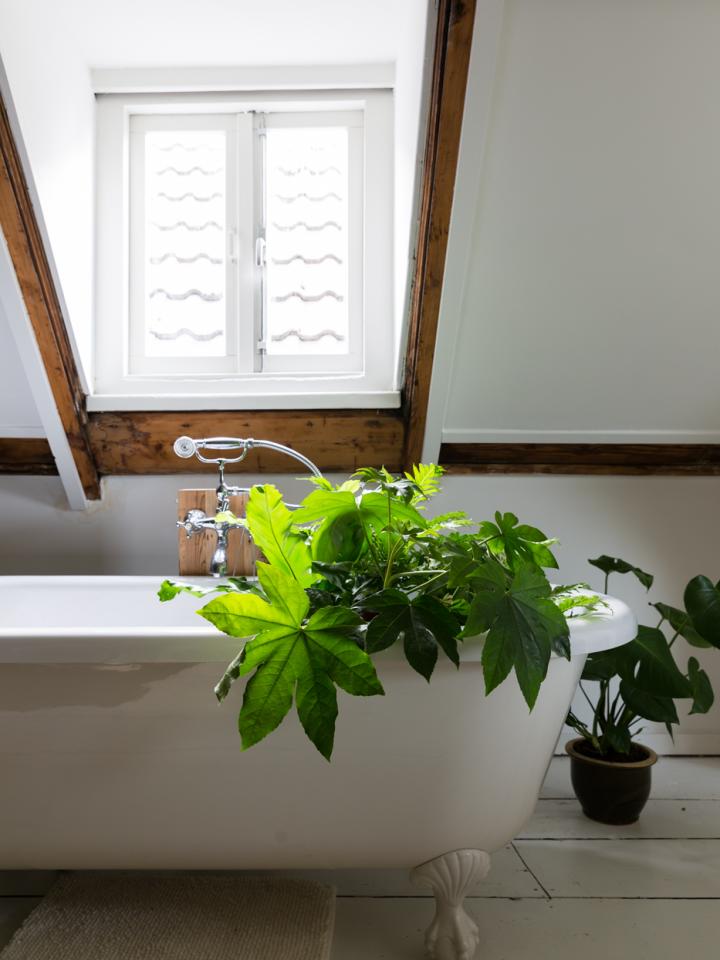
5. watering plants using hydro pellets
If you're away often (lucky you!) then it might be a good idea to invest in hydroponic plants. This means a plant that grows on inorganic material (such as hydro grains, volcanic grains and clay pellets) instead of potting soil.
In this setup, the bottom third of the plant pot is the water reservoir, filled with one of the materials noted above. These grains suck up moisture from the water reservoir and the plant's roots absorb the moisture from the grains. Although the water reservoir occasionally runs empty (you can check this on the water meter) and the plant will then need new water added to the system, you'll need to water them far less frequently using this system, around once every 4-5 weeks instead of weekly. The air between the grains and the plant's roots are also beneficial, making the plant grow better.
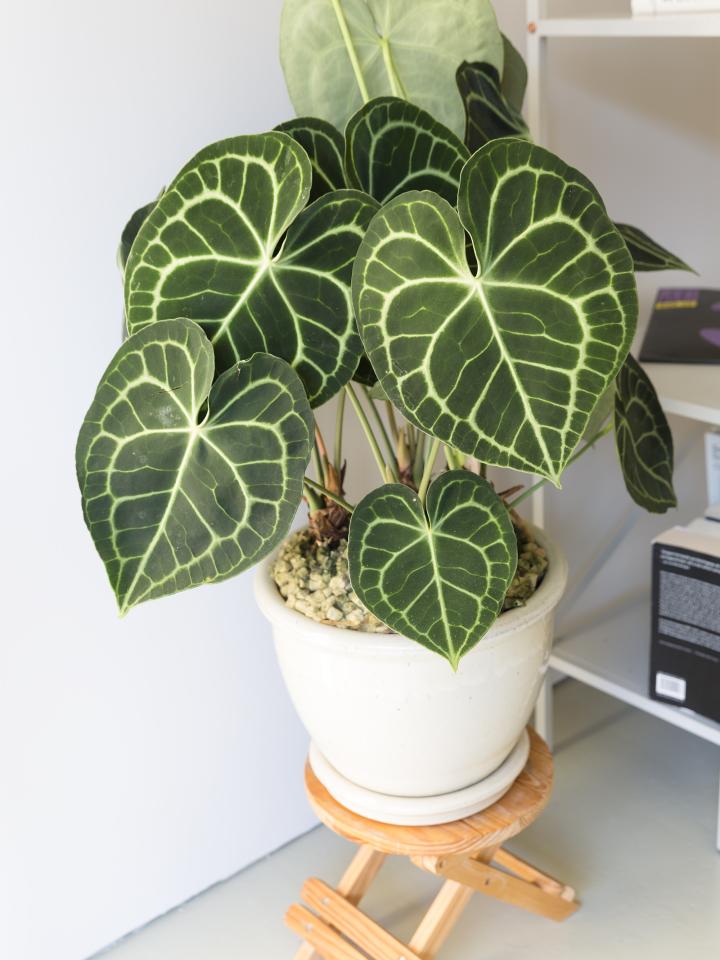
plant sitter tips and advice
Have you arranged for a neighbour, friend or relative to look after your houseplants during your holiday? Check out our tips below:
- If your plant sitter isn't a plant pro, provide a note with watering instructions or stick a post-it on the relevant plant pot. Cacti and dracaena can easily go several weeks without water, whereas Strelitzia and Alocasia may need twice-weekly watering, depending on the season.
- Gather your houseplants and place them together, so your plant nanny doesn't have to chase your plants all over the house. This also reduces the possibility of a lone plant in the spare room being forgotten. By placing plants close together, you create a microclimate in which the plants help each other retain moisture. You could even you could place bowls of water around your plants to increase this effect.
- Extra tip: create two groups of houseplants: a group with plants that need a lot of light and a group with plants that need less light.
- Don't forget your garden plants too! Potted plants need regular watering on hot summer days.
- You could ask your plant sitter to take your plants home, so they don't need to commit to a daily visit to your home.

more houseplant care tips
Your plants are ready for your holiday, but are you up to date on essential care tips for keeping them as happy and healthy as possible? This article has all the basic care tips you could need. Want to propagate your plants? See our tips and tricks here on taking plant cuttings.




